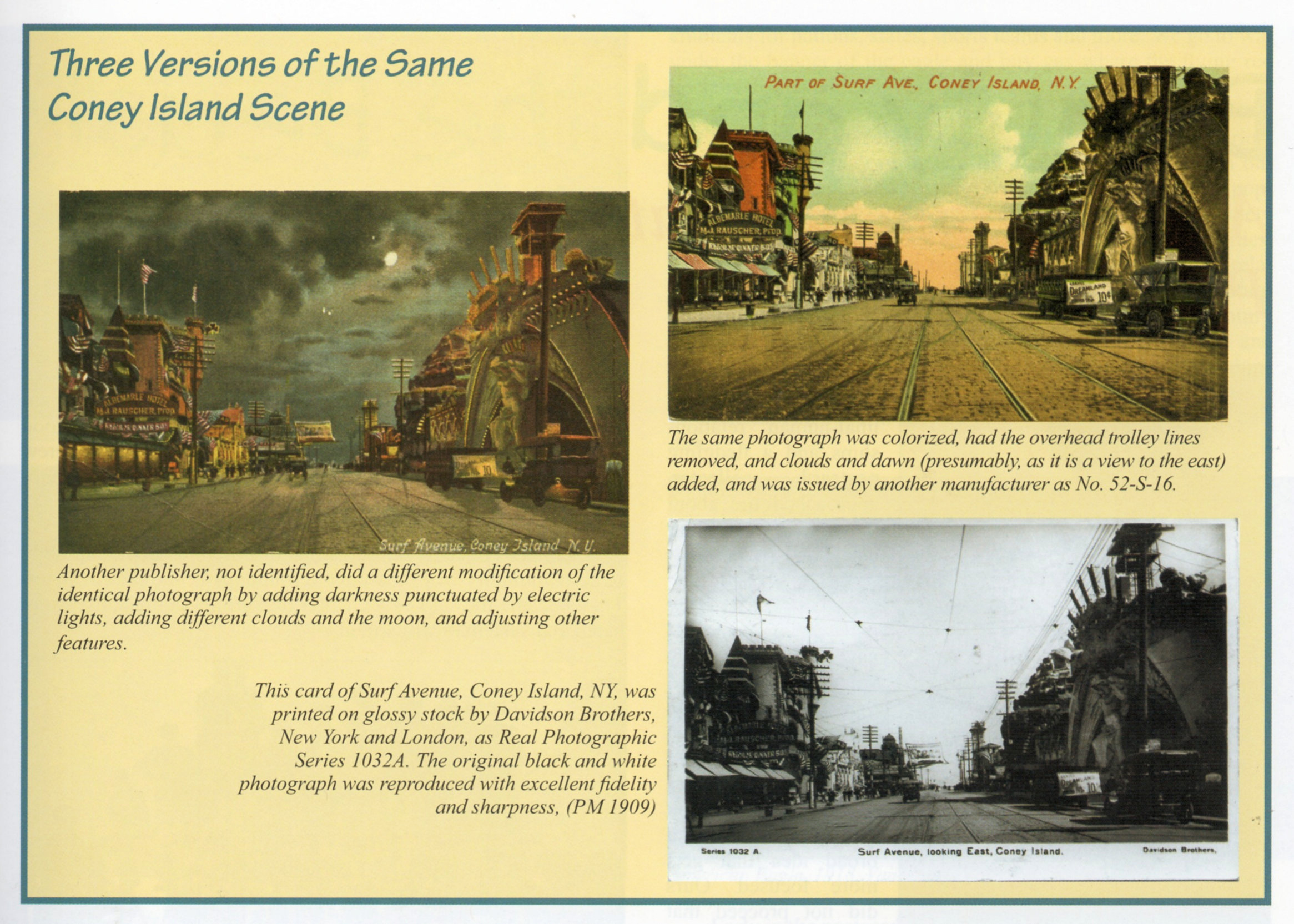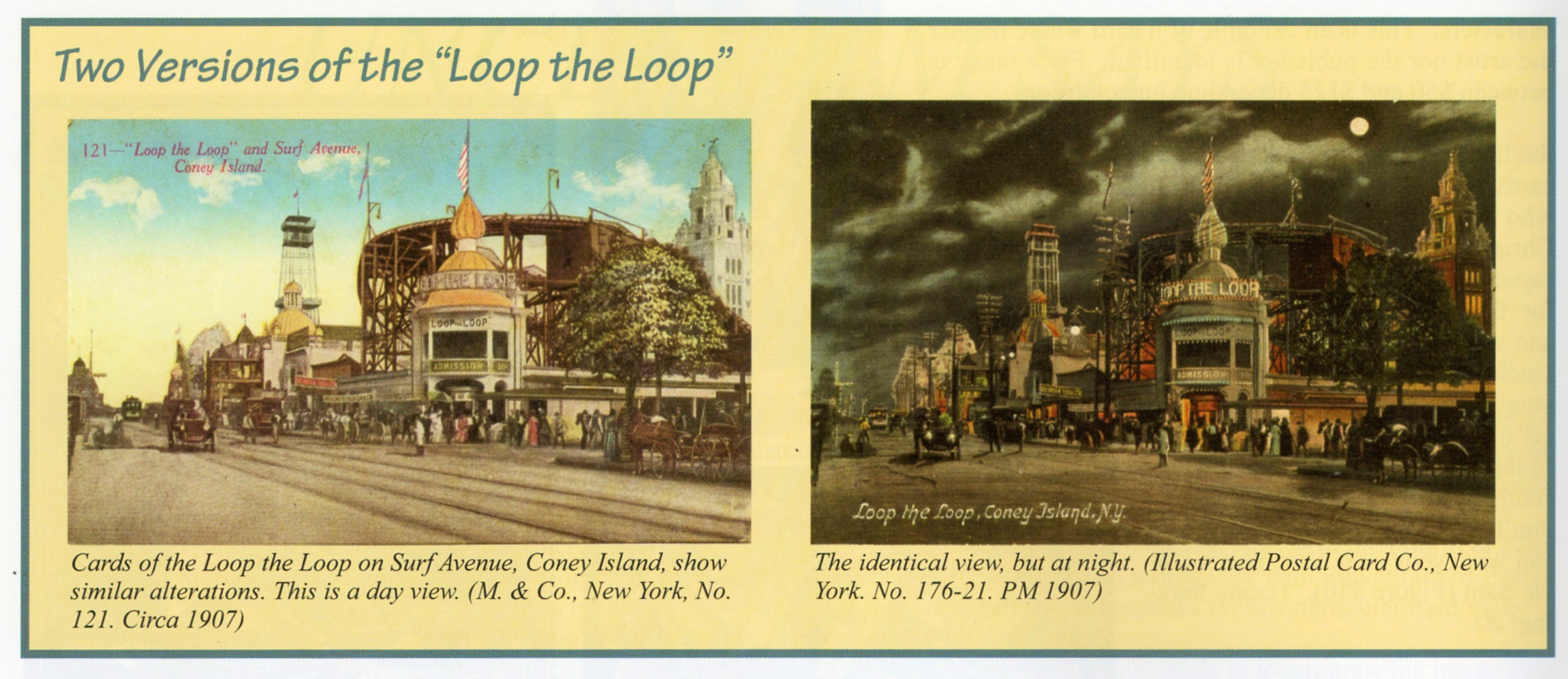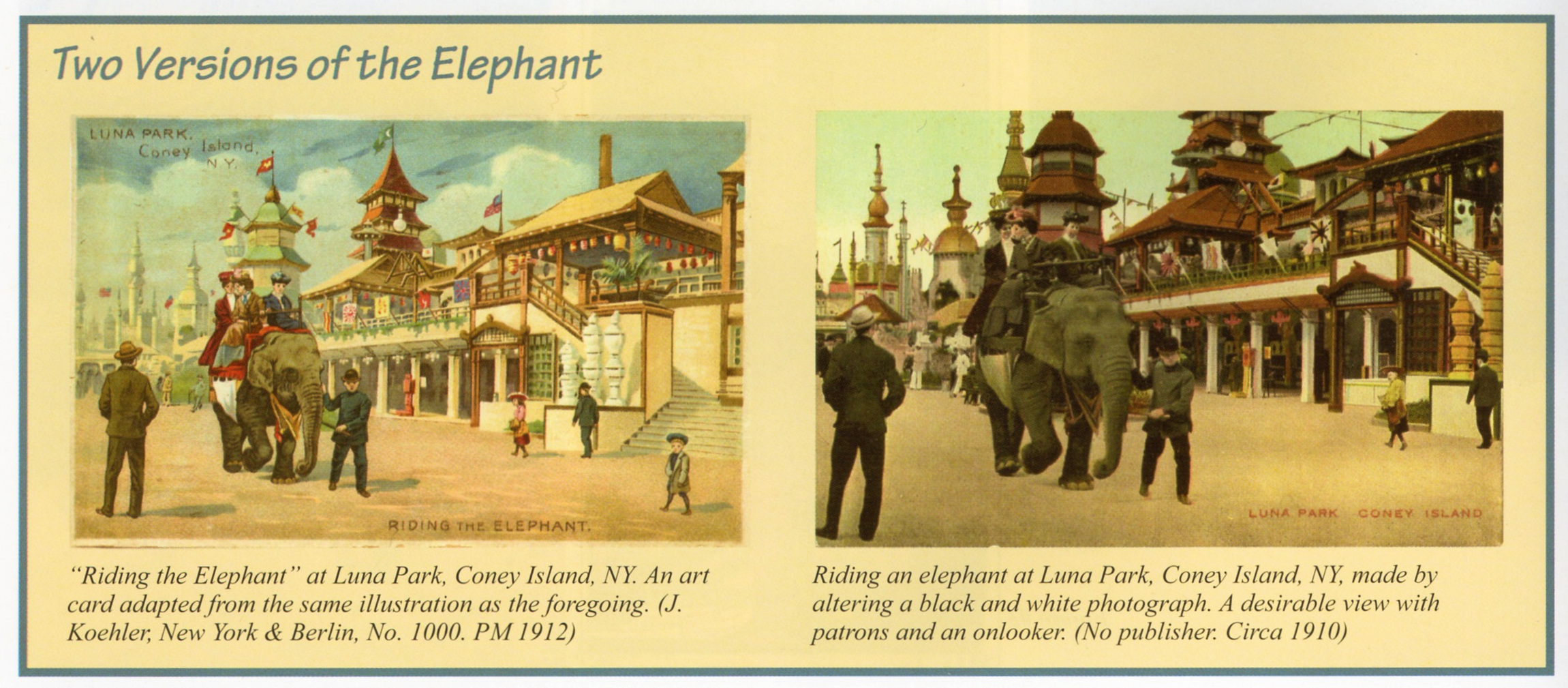Postcard collector and researcher Q. David (Dave) Bowers has enjoyed deltiology for a long time—especially cards that have a link with interesting or, better yet, obscure history. With Mary L. Martin he is creating what will be a reference book on postcards of American origin or interest to be published by Whitman Publishing LLC in 2011 or 2012. In this column he shares some of his favorites—ranging from the easily available to the rare. Watch for something different in each issue!
Coney Island Views: But Look Again!
During the past year I have been working with Mary L. Martin on a Guide Book of Post Cards, to be released as a mass market title by Whitman Publishing LLC. When? Well, we probably have a year of work still to do, then a publishing time can be announced.
In the process I have been looking through thousands of cards to select ones that will make representative illustrations in the book and at the same time be interesting. One of the avenues involves the manipulation or alteration of an image to create all sorts of wondrous postcards—many in brilliant color.
A given black and white photograph, professionally taken or otherwise, was manipulated to add color. In Leipzig, Germany, or some other distant printing plant the artists had no idea if a building front was white, brown, yellow, or some other color, or if the structure was made of wood, brick, or some other material. As a result, color cards showing a main street scene, done by different manufacturers, often have the same subjects with different colors.
Many German printers removed trolley cables and telephone poles and wires, deleted trash from the street, and in other ways improved the appearance of views. It was common practice to add an automobile or two, often brightly colored, to a street view that otherwise had only horse-drawn vehicles—showing that a community was modern and up to date. Adding trolley cars was often done, particularly for main street views of small communities. Likely, the installation of such transportation had been envisioned by the town, but not yet put in place (otherwise the cards would have been a farce).
If a moonlight or other night scene was desired, this was easily done by altering a daylight photograph. It was popular to have a bright moon illuminating puffy clouds. Manufacturers had teams of artists who could perform magic on about any image.
Of all postcard subjects, Coney Island may well have been the most popular in the early 20th century. I have collected these for a long time and have, perhaps, 500 really nice ones and a lot more that are so-so in appearance. One nice thing about view cards is that some of those deemed the most beautiful today were also the best sellers in their own time. Unlike stamps or coins, a rare postcard is often less desirable than a common one. A black-and-white Coney Island card, poorly printed and somewhat indistinct, may be one of a kind—but who wants it?
That said, in looking through my Coney Island subjects I picked out some that illustrate the art of photo manipulation. Today, PhotoShop or some other computer program can make alternations a snap. However, a century ago it took great skill.



